
views
Starting a Project with a Ruffle Edge
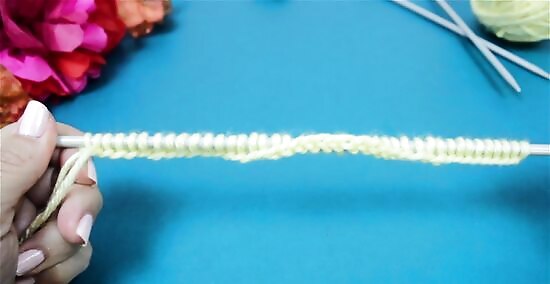
Cast on 4 times the number of stitches you will need for your project. When you start a project with a ruffled border, you will need to cast on 4 times the amount of stitches that your pattern calls for. For example, if your pattern tells you to cast on 30 stitches, cast on 120 stitches to start. This provides the fabric volume for the ruffles. To cast on, make a slipknot and tighten it on the right hand needle. Loop the working yarn around the left hand needle 1 time, and then insert the right hand needle into the loop. Loop the yarn over the right hand needle tip, and pull it through the loop.
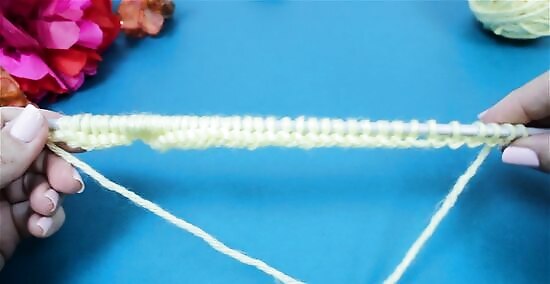
Knit all of the stitches in the first row. After you have cast on the required number of stitches, begin knitting. Knit all of the stitches in the first row, unless your pattern instructs you to do otherwise. For example, if your pattern instructs you to work the ruffle in another special stitch, then work that stitch instead. To knit a stitch, insert the right hand needle through the loop from the front. Loop the yarn over the right hand needle and pull the yarn through the stitch on the left hand needle. Let the stitch on the left hand needle slide off. You may continue working the rest of your rows in the knit stitch for a garter stitch ruffle.
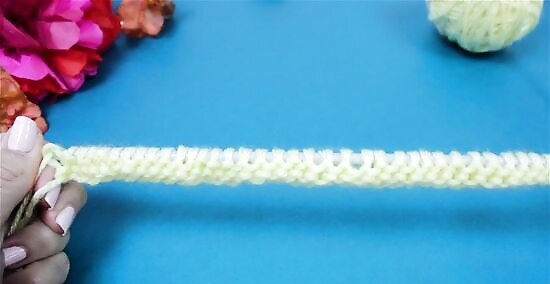
Purl all stitches in the second row for a stockinette stitch ruffle. To continue working your ruffle in the stockinette stitch, the second row and all even rows thereafter will need to be purled. Check your knitting pattern instructions to see if this is the recommended stitch. To purl, insert the right hand needle through the first stitch on the left hand needle from the back. Then, loop the yarn over the tip of the right hand needle and pull it through. Hold the yarn taut and then lift the old stitch slide off of the left hand needle.
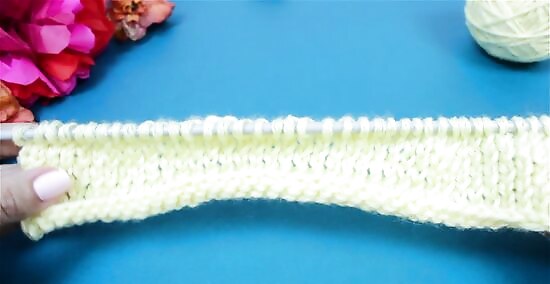
Continue to repeat the row sequence until you have the desired length. Your ruffle can be as long or as short as you’d like it to be, but a good length might be anywhere from 3 to 6 inches (7.6 to 15.2 cm). Keep working the rows until your project is the desired length. Measure the ruffle with a ruler when it seems like you are getting close to the desired length, especially if you are trying to achieve a specific measurement.
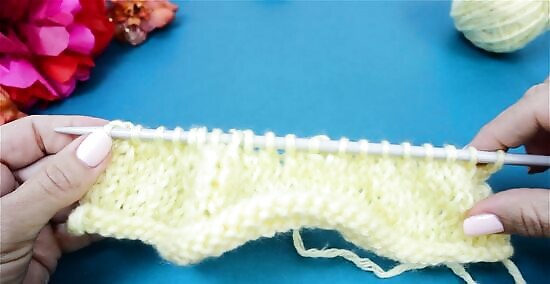
Knit 2 together across the row. Knitting a decrease row will gather the strip of knit stitches you have created and make them start to look like a ruffle. To knit 2 together, insert your knitting needle in through 2 stitches at one time, and then knit the 2 stitches together just the same as you would knit 1 stitch. Continue to knit 2 together all the way to the end of the row. If you are working in the garter stitch, then work another row of knit 2 together stitches after this row to complete your ruffle border.
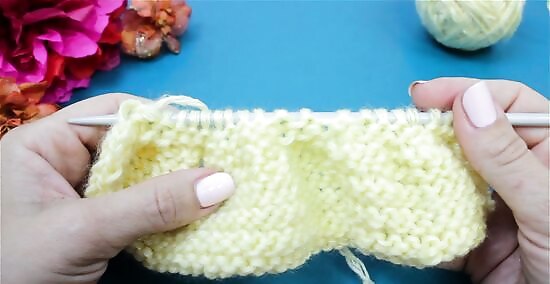
Purl 2 together all the way across. If you are working in the stockinette stitch, then you will need to purl 2 together all the way across the next row. Purling 2 together is the same as knitting 2 together, but you will be purling 2 stitches at 1 time instead of knitting them. Continue to purl 2 together all the way to the end of the row.
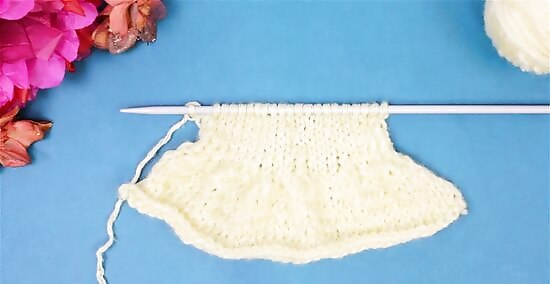
Continue working rows until your project is complete. After you complete the decrease rows, resume working normal rows in the stitch of your choice or as indicated by your project. For example, if your project calls for knitting all of the rows after adding the ruffle, then knit all of the rows until your project is the desired length.
Adding Ruffles to the End or Interior of a Project
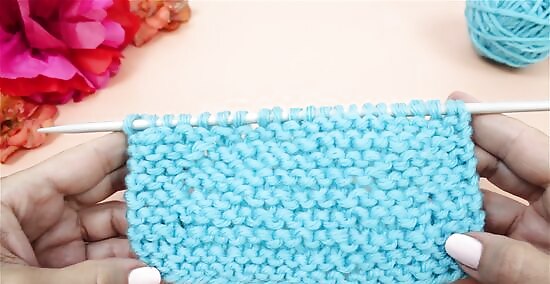
Knit your project to the desired length. Your project should be finished except for the ruffles at the end. Continue knitting your project in the stitch or stitch sequence indicated by your pattern. Measure the project to make sure that you have achieved the desired length before you start a ruffle row.
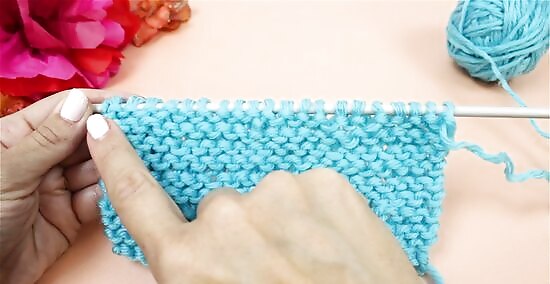
Pick up stitches if needed. If you want to knit the ruffle row at the end of your project, then you can just start the ruffle row without any extra steps. However, if you want to add a ruffle row somewhere else on your knit project, then you will need to pick up stitches. For example, if you want to knit a ruffle row down the center of a knit item, then you will need to pick up stitches. To pick up stitches, insert your needle in through each of the stitches in a single row. Then, work the stitches to knit your ruffle row.
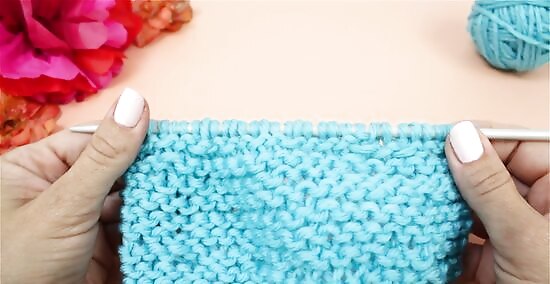
Knit 1 and then increase the next stitch by knitting front and back. When you are ready to start adding ruffles, knit 1 stitch. Then, knit the next stitch in the front and in the back. Knit into the stitch as you normally would to knit into the front, but do not let the old stitch slide off the needle. Instead, insert the needle in through the back of the stitch to knit the same 1 purlwise. Then, slip the old stitch off of the needle and allow the 2 new stitches you created to replace them. After you knit front and back, knit 1 stitch again. Then, knit front and back again. Repeat this increase sequence all the way across the row. Every other odd stitch in the row will be a single knit stitch, and every even stitch will be a knit front and back stitch. You may also knit front and back into all stitches in the row if you want a fuller ruffle.

Work all stitches until the ruffle is the desired length. After you have completed the increase row, continue working the ruffle in the stitch of your choice, or as indicated by your pattern until you have achieved the desired length. Measure the ruffle when it seems like it is close to the length you want it to be. A good length for a ruffle is anywhere between 3 to 6 inches (7.6 to 15.2 cm), but you may make your ruffle as long or as short as you like.

Bind off the last row of stitches. To do this, knit the first 2 stitches in the row as you normally would. Then, insert the left hand needle into the first stitch you knit onto the right hand needle. Pull this stitch up and over the second stitch and let it slide off the needle. Then, knit 1 stitch and pull the new first stitch over the stitch you just knit. Repeat the bind off process all the way to the end of the row. Do not bind off until the ruffle is the length you want it to be. Measure the ruffle to be sure.




















Comments
0 comment